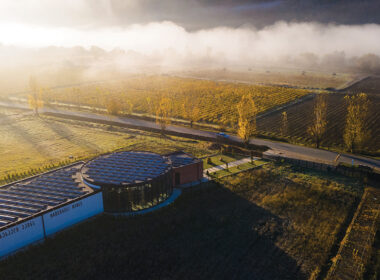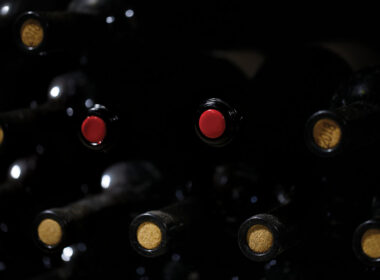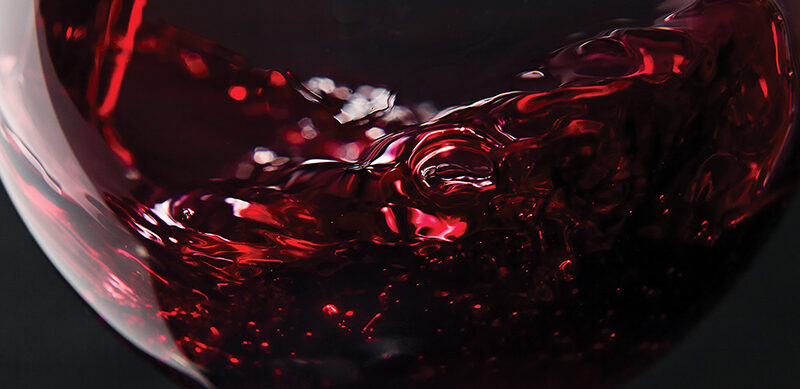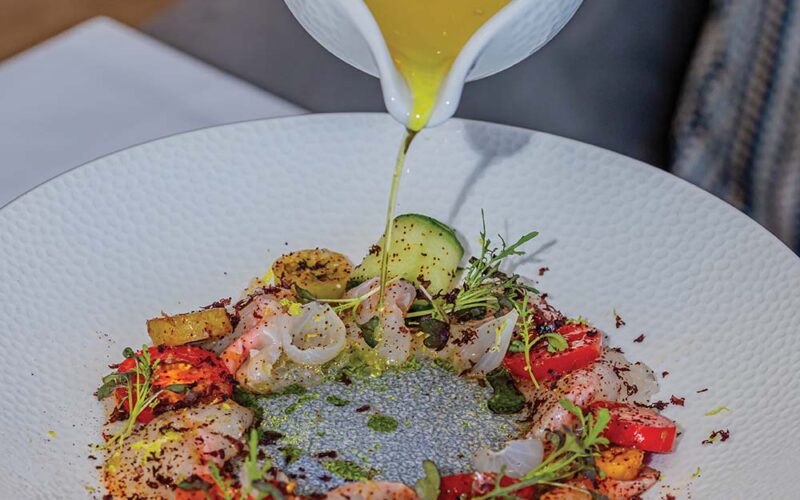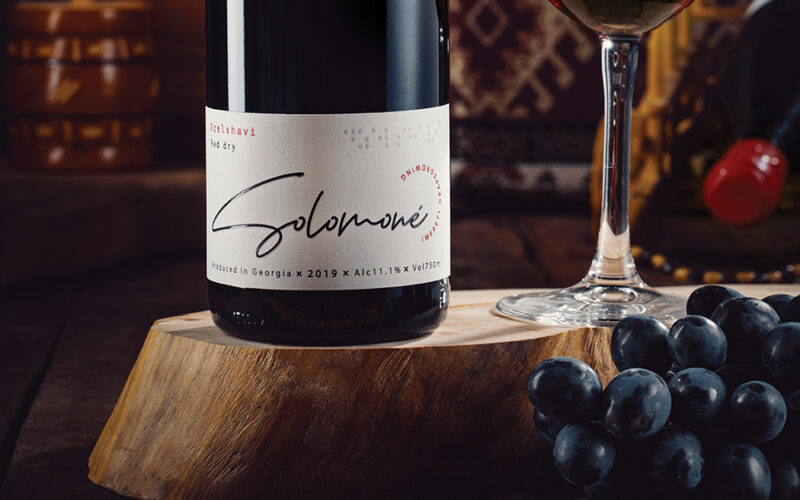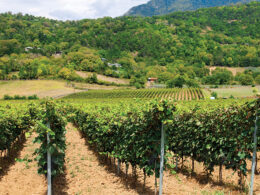| By Nana Jojishvili |

Prologue
One branch of the ancient Silk Road passed through Georgia, facilitating active trade between Central Asia and Europe. In Georgia, the route began in the east, in Kakheti, and extended to ancient Colchis—the kingdom where Jason sought the Golden Fleece—on the Black Sea coast. From there, goods were transported to Europe via the shortest maritime route. The Greeks were among Colchis’s primary trading partners, as evidenced by the Hellenistic burial grounds in Pichvnari, near Kobuleti. Because qvevris were unsuitable for transport, Georgian wine was shipped in amphorae.
Following the Hellenistic era, records of Georgian wine trade appear in various historical sources. In the 6th century, the Byzantine historian Procopius of Caesarea noted that the Meskhians (an ethnographic subgroup of Georgians from southwestern Georgia), cultivated extensive vineyards and exported their wine to other countries. Later, in the early 17th century, French traveler Jean Chardin also documented Georgian wine exports. By the late 19th century, Georgian wine had entered European markets. At the 1889 Paris Wine Exhibition, the wines of Prince Ivane Bagrationi of Mukhrani (Ivane Mukhranbatoni), who exported wine not only to Europe but also to America, earned recognition and medals.
Today, Georgian wine is exported to numerous countries across Europe, Asia, Australia, and both North and South America. In Africa, its presence is more limited. However, during market research, I discovered two South African wineries—Avondale Winery and Klein Amoskuil—that produce wine in Georgian qvevris, selling it in upscale restaurants and wine bars.
AUSTRALIA

Irakli Gotsiridze | WSET level 4 Sommelier
International Master on Wine Tourism Transitions and Innovations (WINTOUR)
Although Irakli’s formal education was not in wine, he has had firsthand experience with vineyards since childhood in the village of Asureti. After completing the WINTOUR Master program and gaining experience in European and Californian winemaking, he moved to Australia. Having observed the Australian market for five years, he now plans to import natural Georgian wines. He has selected wines from six small wineries, set to arrive in Australia soon.
Irakli says that the Australian wine market is primarily dominated by local wines, as well as those from New Zealand, France, and, to a lesser extent, other European countries. Georgian amber wine doesn’t face competition from these, unlike French, Italian, and Spanish wines also aged in amphorae. He also notes that there is interest in natural wines in Australia, but this type of wine holds a relatively small share of the market.
Q: Irakli, what is your view on the potential for growth of the Georgian wine market in Australia?
A: I wouldn’t say that the market is expanding significantly, but there is clear interest in amber wine. I believe that in this category, Georgian wine stands out as one of the best and most interesting products due to its quality, qvevri technology, and history. Therefore, our focus will be on wines from small wineries—primarily qvevri amber wines, and to a lesser extent, reds, as the Australian market is already saturated with local red wines.
Amber wine is mostly preferred by younger and middle-aged consumers (ages 25–40) with stable incomes. This group of wine enthusiasts tends to visit specialised bars that offer a wide selection of such wines. There are quite a few excellent bars in Sydney and Melbourne where amber wines can be found, though the same cannot be said for restaurants.
In Australia, the price of amber wine ranges from $50 to $100. Georgian wine is relatively expensive here. For example, in one of the wine bars, a bottle of Iago Bitarishvili’s wine (Iago’s Wine) costs $80. French natural wines are priced similarly. The higher prices in Australia are primarily due to alcohol taxes and transportation costs.
ქართული ღვინო მსოფლიოს ირგვლივ
პროლოგი
მსოფლიოში უძველესი აბრეშუმის სავაჭრო გზის ერთი შტო საქართველოზე გადიოდა და ცენტრალური აზიიდან ევროპის ქვეყნებში ვაჭრობა აქტიურად ხორციელდებოდა. ეს გზა საქართველოში აღმოსავლეთიდან, კახეთიდან იწყებოდა და მაშინდელ კოლხეთში, შავი ზღვის სანაპიროზე მთავრდებოდა, საიდანაც უმოკლესი გზით გემებს ტვირთი ევროპის მიმართულებით გადაჰქონდათ. კოლხებთან ყველაზე აქტიურ სავაჭრო ურთიერთობაში ძველი ბერძნები იყვნენ, რისი კვალიც შავი ზღვის სანაპიროსთან, ქობულეთში, ფიჭვნარის ელინისტურ სამარხებშიც არის შემორჩენილი. მოგეხსენებათ, ქვევრი ტვირთის გადასატანად არ იყო განკუთვნილი, ამიტომ საქართველოდან ღვინის ტრანსპორტირება ამფორების მეშვეობით ხდებოდა.
ელინისტური ეპოქის შემდგომ, ქართული ღვინით სხვა ქვეყნებში ვაჭრობის შესახებ ცნობებს ვხვდებით როგორც VI-ე საუკუნის ბიზანტიელ მწარალ პროკოფი კესარიელთან, რომლის გადმოცემით, მესხებს ბევრი ვენახი ჰქონდათ და ღვინოც სხვადასხვა ქვეყანაში გაჰქონდათ გასაყიდად, ისე მოგვიანებით, XVII-ე საუკუნის დასაწყისში, ფრანგ მოგზაურ ჟან შარდენთან. მე-XIX საუკუნის ბოლოს, ქართული ღვინო ევროპულ ბაზრებზეც გამოჩნდა. 1889 წელს, პარიზის ღვინის გამოფენაზე, ივანე მუხრანბატონის ღვინოებმა (რომელსაც ევროპის გარდა, ღვინო ამერიკაშიც გაჰქონდა) აღიარება და მედლები მოიპოვა.
დღეს, ქართული ღვინო როგორც ევროპის, ისე აზიის, ავსტრალიის, ჩრდილოეთ და სამხრეთ ამერიკის არაერთ ქვეყანაში გადის. აფრიკის კონტინენტის ქვეყნებში შედარებით მცირე რაოდენობითაა, თუმცა, ბაზრების კვლევისას, სამხრეთ აფრიკაში, ნატურალური მიმართულების ორი მეღვინეობა აღმოვაჩინე – Avondale Winery და Klein Amoskuil, რომლებიც ქართულ ქვევრებში აყენებენ ღვინოს და მაღალი კლასის რესტორნებსა და ღვინის ბარებში ჰყიდიან.
ავსტრალია
ირაკლი გოცირიძე | WSET level 4 Sommelier
International Master on Wine Tourism Transitions and Innovations (WINTOUR)
მართალია, ირაკლის პირველადი განათლება ღვინოსთან კავშირში არ ყოფილა, თუმცა ვენახთან შეხება სოფელ ასურეთში ბავშობიდან ჰქონდა. Wintour Master-ის პროგრამის დასრულებისა და ევროპულ და კალიფორნიულ მეღვინეობებში გამოცდილების დაგროვების შემდეგ, საცხოვრებლად ავსტრალიაში გადავიდა. ხუთი წელია, ამ ბაზარს აკვირდება და მისი სამომავლო გეგმები ქართული ნატურალური ღვინის იმპორტს უკავშირდება. ამ ეტაპზე, 6 მცირე მარნის ღვინოები აქვს შერჩეული, რომელთა ტრანსპორტირება ავსტრალიისკენ უახლოეს ხანში უნდა განხორციელდეს.
ირაკლი ამბობს, რომ ავსტრალიური ღვინის ბაზარი ძირითადად ადგილობრივი, ასევე ახალზელანდიური, ფრანგული და მცირე რაოდენობით სხვა ევროპული ქვეყნების ღვინოებით არის გაჯერებული. მათთან ქართული ქარვისფერი ღვინო კონკურენციაში არ არის, განსხვავებით ამფორაში დაყენებული ფრანგული, იტალიური, ესპანური ღვინოებისგან. ამბობს იმასაც, რომ ნატურალური ღვინოების მიმართ ინტერესი ავსტრალიაში არის, მაგრამ ბაზარზე ასეთი ტიპის ღვინოს შედარებით მცირე ადგილი უჭირავს.
Q: ირაკლი, როგორ ფიქრობთ, რამდენად მზარდი შეიძლება იყოს ავსტრალიური ბაზარი ქართული ღვინისთვის?
A: ვერ ვიტყვი, რომ ბაზარი მაინცდამაინც მზარდია, თუმცა ქარვისფერი ღვინის მიმართ ინტერესი ნამდვილად არსებობს. ვფიქრობ, ამ კატეგორიაში ქართული ღვინო თავისი ხარისხით, ქვევრის ტექნოლოგიითა და ისტორიით ერთ-ერთ საუკეთესო და საინტერესო პროდუქტს წარმოადგენს. ამიტომაც ჩვენი ხაზი მხოლოდ მცირე მარნების ღვინოები იქნება – უფრო ქვევრის ქარვისფერი, შედარებით ნაკლები რაოდენობით კი წითლები, რადგან ავსტრალიის ბაზარი ისედაც გაჯერებულია ადგილობრივი წითელი ღვინით.
რაც ეხება ქარვისფერ ღვინოს – მასზე არჩევანს უფრო ახალგაზრდა და საშუალო ასაკის, სტაბილური შემოსავლის მქონე მომხმარებლები აკეთებენ, რომელთა ასაკი 25-40 წელია. ღვინის მოყვარულთა ეს კატეგორია სტუმრობს სპეციალიზირებულ ბარებს, სადაც ასეთი ღვინოების ფართო არჩევანია. სიდნეისა და მელბურნში საკმაოდ ბევრი კარგი ბარია, სადაც ქარვისფერ ღვინოებს შეხვდებით, რასაც ვერ ვიტყვით რესტორნებზე.
ქარვისფერი ღვინის ფასი ავსტრალიაში 50-100 დოლარის ფარგლებში მერყეობს. ქართული ღვინო აქ საკმაოდ ძვირია. მაგალითისთვის, ერთ-ერთ ღვინის ბარში იაგო ბიტარიშვილის ღვინო (იაგოს ღვინო) 80 ამერიკული დოლარი ღირს. დაახლოებით ასეთივე ფასი აქვს ფრანგულ ნატურალურ ღვინოებსაც. ფასის ზრდას ავსტრალიაში ალკოჰოლის გადასახადი და ტრანსპორტირების ხარჯები განაპირობებს.


